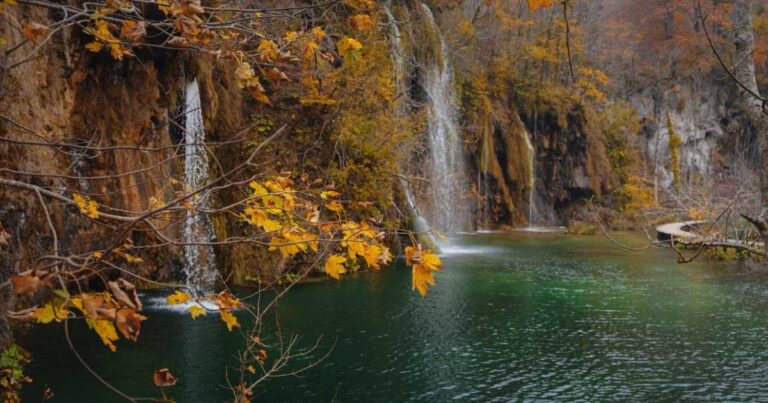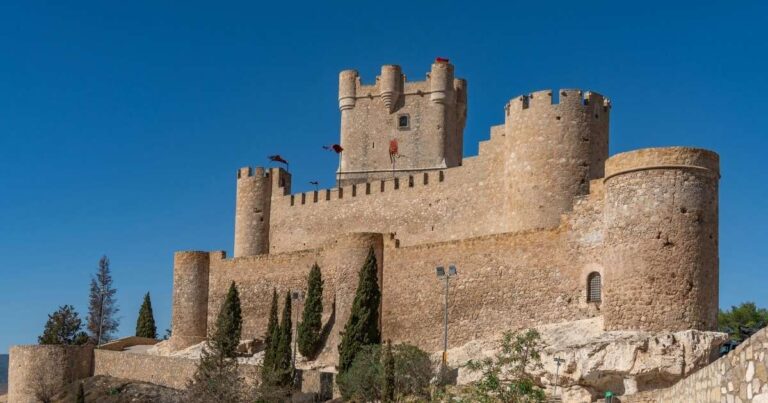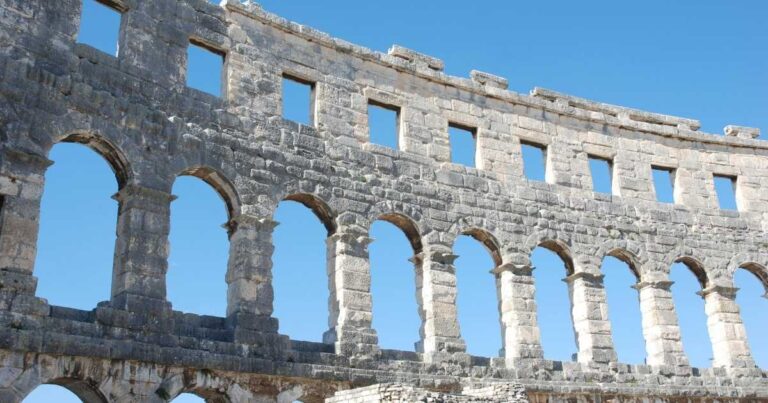Croatia has quickly become one of Europe’s top travel destinations, attracting visitors with its stunning coastline, rich history, and vibrant culture. From the ancient walls of Dubrovnik to the serene beauty of Plitvice Lakes National Park, Croatia offers an abundance of experiences for every traveler. However, while many travelers rely on renting a car to explore, you can easily navigate Croatia without one. With an efficient network of public transportation, alternative options, and local conveniences, getting around the country without a car is not only possible but enjoyable.
Overview of Croatia as a Travel Destination
Croatia offers a unique blend of Mediterranean charm, historical landmarks, and breathtaking natural landscapes. Its coastline is dotted with over a thousand islands, while inland Croatia showcases beautiful national parks, picturesque villages, and historical towns. Croatia’s well-developed infrastructure makes it easy for tourists to explore both the urban centers and the natural wonders without a car. Whether you’re visiting Zagreb, Dubrovnik, Split, or the hidden gems in between, getting around is straightforward and convenient.
Importance of Understanding Transportation Options
Navigating a foreign country without a car can seem daunting, but understanding your transportation options ahead of time can make all the difference. In Croatia, you’ll find a variety of ways to travel that cater to different needs and budgets. From hopping on a bus to taking a ferry between islands, each option allows you to experience the country at a relaxed pace, all while avoiding the hassle and cost of renting a vehicle.
Purpose of the Guide: Navigating Croatia Without a Car
This guide is designed to help you navigate Croatia efficiently without needing a car. We’ll cover the best transportation methods for getting around, including public transit options like buses and trains, alternative choices like ferries and bicycles, as well as walking and local transport in cities. Whether you’re planning a short stay or a longer adventure, this guide will ensure you can explore Croatia’s hidden gems while traveling with ease.
Public Transportation
Overview of Public Transport Systems in Croatia
Croatia’s public transportation system is reliable, affordable, and well-connected, especially in larger cities and between popular tourist destinations. With an extensive network of buses and trains, getting around the country is straightforward. The transportation system is frequently used by locals and tourists alike, making it a convenient way to explore Croatia without the need for a car.
Buses
Major Bus Companies and Routes
Buses are the backbone of public transportation in Croatia, especially for travelers looking to visit destinations outside of major cities. Croatia’s bus network connects towns, cities, and even islands, making it easy to travel long distances. Major bus companies include Čazmatrans, FlixBus, and Autotrans, all of which offer routes to popular destinations like Zagreb, Split, Zadar, and Rijeka.
- Intercity Routes: Buses run frequently between major cities such as Zagreb, Split, and Dubrovnik, with travel times ranging from 2-8 hours depending on the distance.
- Regional Routes: There are also buses that connect smaller towns and rural areas to the larger cities, offering access to places that are otherwise hard to reach.
Ticket Purchasing and Pricing
Tickets can be purchased online through the bus company websites, at bus stations, or directly from the driver on board. Prices are generally affordable, with intercity routes typically costing between 5 and 30 EUR, depending on the distance. It’s recommended to book tickets in advance, especially during peak travel seasons, to secure a seat.
Tips for Using the Bus System
- Book in advance: During high season, buses can fill up quickly, so it’s wise to book tickets ahead of time.
- Arrive early: It’s a good idea to arrive at the bus station 15-20 minutes before departure, especially if you’re unfamiliar with the area.
- Check routes: Double-check bus schedules as they can change depending on the time of year.
Trains
Overview of the Railway Network
Croatia’s train network is operated by HŽ Putnički Prijevoz and connects many of the country’s major cities and towns. While trains are not as extensive as buses, they offer a comfortable and scenic way to travel, particularly on routes between Zagreb, Split, and Rijeka. Trains are also a great option for those who want to enjoy Croatia’s countryside and coastline from the comfort of their seat.
Key Train Routes and Destinations
- Zagreb to Split: The train journey from the capital to the coast takes approximately 6 hours and offers stunning views of the countryside.
- Zagreb to Rijeka: This scenic route runs through the picturesque landscapes of central and northern Croatia, taking about 3 hours.
- Zagreb to Osijek: The train ride to Osijek in eastern Croatia is another fantastic option for visitors interested in exploring the country’s less-visited areas.
Booking Tickets and Travel Tips
- Ticket purchasing: Tickets can be purchased online via the official Croatian Railways website or at ticket counters at train stations.
- Travel tips: Trains are usually punctual, but it’s always a good idea to check the schedule in advance. For longer journeys, consider booking a first-class seat for added comfort.
Alternative Transportation Options
Ferries and Boats
Importance of Ferries in Island Hopping
Croatia is known for its numerous islands, and ferries are the primary means of transportation between them. From the bustling islands of Hvar and Brač to the tranquil Korčula and Vis, ferries allow you to explore Croatia’s island paradise. Whether you’re traveling between the mainland and the islands or hopping from one island to another, ferries offer a reliable and scenic way to travel.
Major Ferry Routes and Operators
- Split to Hvar: A popular ferry route that connects the mainland with the vibrant island of Hvar, known for its nightlife and beautiful beaches.
- Zadar to Pag: Ferries also operate between the mainland and islands, such as Pag, which is famous for its cheese and nightlife.
- Dubrovnik to Mljet: Take a ferry from Dubrovnik to the peaceful island of Mljet, known for its national park and crystal-clear waters.
Ferry Operators:
- Jadrolinija: The largest and most well-known ferry operator in Croatia, offering routes to most islands.
- Krilo: A smaller ferry company that operates fast boats between popular destinations.
Tips for Booking and Traveling by Ferry
- Book tickets early: Especially during the peak summer months, ferries can get crowded, so it’s a good idea to book tickets in advance.
- Arrive early: Arrive at the ferry terminal at least 30 minutes before departure to ensure a smooth boarding process.
- Pack accordingly: If you plan to bring a car on the ferry, make sure to reserve a spot well in advance, as space is limited.
Bicycles
Availability of Bike Rentals
Croatia is a cyclist’s paradise, offering scenic routes through both coastal and inland landscapes. In many cities, bike rentals are widely available, with companies offering everything from mountain bikes to e-bikes. Renting a bike is a great way to explore Croatia’s cities, national parks, and coastlines at your own pace.
Popular Cycling Routes and Trails
- Parenzana Trail: This 123 km-long trail runs from Trieste, Italy, to Poreč in Croatia, passing through picturesque villages and stunning landscapes.
- Krka National Park: Cycling through Krka offers an immersive way to experience the park’s natural beauty, including waterfalls and rivers.
Safety Tips for Cycling in Croatia
- Wear a helmet: Helmets are recommended for safety, especially when riding on busy roads.
- Stay hydrated: Croatia can get hot, especially in summer, so carry water with you.
- Know the rules: Cyclists must adhere to local traffic laws, including riding on the right side of the road and using bike lanes where available.
Walking and Local Transport
Exploring Cities on Foot
Benefits of Walking in Urban Areas
Walking is one of the best ways to explore Croatia’s cities. Most of the major tourist destinations, like Zagreb, Split, and Dubrovnik, are compact and pedestrian-friendly, with narrow streets, historic buildings, and plenty of local charm to discover. Walking also allows you to stumble upon hidden gems, from charming cafes to picturesque courtyards.
Recommended Walking Tours and Routes
- Zagreb Old Town: Walk through Zagreb’s historic core, exploring landmarks like St. Mark’s Church and the medieval Stone Gate.
- Dubrovnik City Walls: A walk along the city walls offers panoramic views of Dubrovnik and the Adriatic Sea.
- Split’s Diocletian’s Palace: Explore the ancient Roman palace on foot, experiencing the city’s rich history up close.
Local Transport Options
Trams and Local Buses in Major Cities
In cities like Zagreb and Split, trams and local buses are an efficient way to get around. Zagreb’s tram network is extensive, covering the city center and beyond. In Split, buses are the primary mode of transport, especially for traveling to nearby suburbs and the airport.
Ride-Sharing Services and Taxis
For short distances or when you need a quick ride, ride-sharing services like Uber and Bolt are widely available in larger cities. Taxis are also common and easy to find at designated stands or by calling a local taxi service.
Conclusion
Recap of Transportation Options Available Without a Car
Getting around Croatia without a car is entirely possible and often more convenient, especially when you take advantage of the country’s efficient public transport systems, ferries, bicycles, and walking routes. Whether you choose to travel by bus, train, ferry, or bike, there are plenty of options to explore both the urban centers and the beautiful natural landscapes.
Encouragement to Explore Croatia Using These Methods
Croatia’s public transportation network, coupled with its picturesque surroundings, offers a unique way to explore the country. Skip the car rental and discover the true beauty of Croatia by taking advantage of the available transportation options. Whether you’re visiting the islands, exploring the cities, or venturing into the national parks, Croatia offers the freedom to roam without a vehicle.
Final Tips for a Smooth Travel Experience in Croatia
- Plan ahead: Check timetables for trains, buses, and ferries before traveling.
- Travel light: When taking public transport, it’s easier to move around with a small bag or backpack.
- Be mindful of peak seasons: During the high tourist season, book transportation and accommodations early to secure the best options.
FAQs
- Can I rely on public transport to get around Croatia?
- Yes, public transport in Croatia is efficient and affordable, especially for major cities and popular destinations.
- What is the best way to travel between Croatia’s islands?
- Ferries are the most common and reliable way to travel between Croatia’s islands.
- Is it safe to cycle in Croatia?
- Yes, cycling is safe, but always wear a helmet and follow local traffic laws.
- Are taxis expensive in Croatia?
- Taxis are relatively affordable in Croatia, but for shorter trips, consider using ride-sharing apps like Uber or Bolt.
- Do I need a car to visit national parks in Croatia?
- No, most national parks like Krka and Plitvice are accessible by public transport, and hiking is a popular way to explore them.







